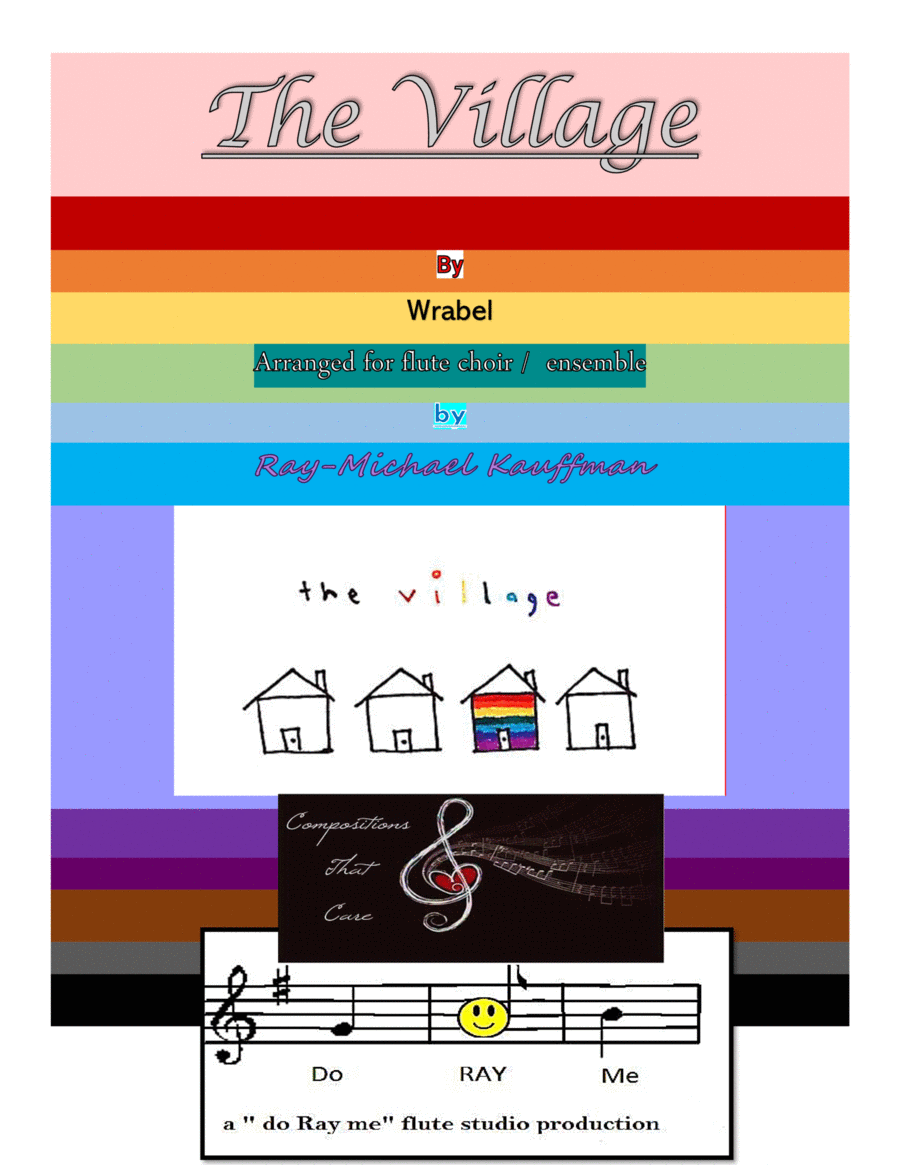Flute Choir,Woodwind Ensemble Alto Flute,Bass Flute,Piccolo,Soprano Flute - Level 4 - Digital Download SKU: A0.1242493 By Wrabel. By Andrew Jackson, Andrew Pearson, and Stephen Wrabel. Arranged by a do Ray me flute studio production Ray-Michael Kauffman. 21st Century,Contemporary,Film/TV,Pop,Singer/Songwriter. 53 pages. As do Ray meflute studio production #837642. Published by as do Ray meflute studio production (A0.1242493). The Village by Wrabel, arranged for flute choir /ensemble arranged by me, Ray-Michael Kauffman. This beautiful and poignant song is part of my Compositions that care series, meaning all profits from thios arrangemnt goes to a charity. This charity is for LGBTQ+. ( about the song meaning)Wrabel, the composer, stated the song is about the LGBTQ+ community and all the hardships they face.The song is directed and to encourage and give hope to a trans person who is being treated poorly and ostracized , and to let that perosn struggling know that there is absolutely Nothing wrong with you and there's soemthing wrong with the village.Too many of the trans/LGBTQ+ comminity are struggling , especially in todays political climate. All around the world LGBTQ+ persons are being bullied, discriminated against , attacked, thrown in jail , and even killed with liitle to no laws to protect people.in my own personal life, as a victim of a horrible hate crime where the person involved attmepted to beat me and kill me , unfortuanelty i found out very qucikly how laws even in the USA do not protect me , how many cops ignored me and/or attmepted to make the attack my fault , and how laywers did not want to help and judges either ,and beacsue of the laws i was not protected as a minority and the crime wasn't a hate crime even though the criminals admitted this as the reason of the attack.I was told that this was not a hate crime , unless the criminals made me a victim of S.A., used a car/vehicle , or a gun, or actually ended my life. I also wanted to add , this brutal attack ( recorded on video by the criminals ) which caused such serious bodily harm, had me in the hospital for surgeries, and required months of long and painful rehab and therapy.As a country, as a society, as a planet , we all need to do better, and have to have more protections for such a discriminated group of persons.I did want to add , all the issues happening around the world, and even here in the USA, such as the awful and fascist discrimitory laws in Florida and other states it's no wonder the statistics of LGBTQ+ that contemplate ending their person or even attempting the act .I ask respectfully that every one please go to law makers and demand better laws and treatments of people no matter what community there are of. All people deserve respect, proper medcial care, and to have the same rights as every other human being. We all can and must be the change you wish to see in the world. ( Ganhdi)Thank you for checking my special arrangement out, and please check out my other arrangements on SheetMusicPlus and my Website @ doRaymeflute.comÂ
